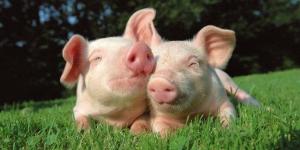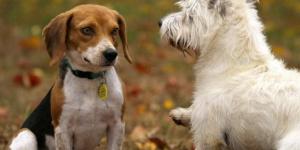How Do Dogs Keep Cool?

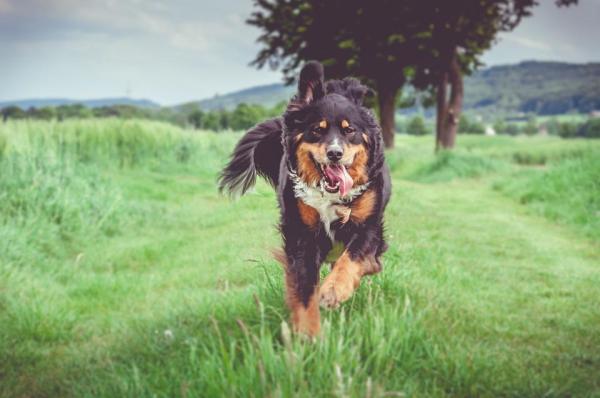

See files for Dogs
As the summer approaches, it becomes essential for us to understand how our dogs manage to stay cool, especially in places of extreme temperatures where dogs may be at risk of heatstroke. We can tell dogs are hot if we notice they are panting heavily after a walk or a game session on a hot day. But what about sweat? Do they sweat like we do? The answer is not straightforward, dogs do sweat, but they rely on other mechanisms for cooling down and regulating their body temperature.
This AnimalWised article explores sweating in dogs and other ways they regulate their body temperature.
Do dogs sweat?
Have you ever wondered how dogs stay cool on hot days? Unlike humans, who sweat profusely, dogs employ a different cooling mechanism. While it's a common misconception that dogs don't sweat at all, they actually do sweat, but this sweating plays a minor role in their overall cooling process.
Dogs possess two distinct types of sweat glands:
- Merocrine sweat glands: these glands, primarily located in the paw pads, consist of secretory cells. When a dog feels hot or anxious, these glands release sweat, which can sometimes be observed as faint, moist footprints when the dog walks. The moisture evaporates from the hairless paw pads, aiding in the dissipation of a minor amount of body heat.
- Apocrine sweat glands: these glands are distributed throughout a dog's body but are not involved in cooling. Instead, they produce pheromones that facilitate communication between dogs.
In the following sections, we will explore the different mechanisms dogs use to keep cool in the heat.
Sweating
Dogs use their foot pads for cooling down through a process of sweating and evaporation.
As mentioned earlier, dogs have merocrine glands in their paws, which are similar to the sweat glands humans have all over their bodies. When a dog gets hot, these merocrine glands release sweat onto the paw pads.
Since paw pads are hairless, the moisture can easily evaporate into the air. As the sweat evaporates, it takes heat away from the dog's body, helping it cool down.
However, it's important to note that sweating is a minor contributor to cooling for dogs. Paw pads are relatively small compared to a dog's entire body. This means there's not a lot of space for sweat to evaporate and have a significant cooling effect. Not only that but also dog's fur coat can trap sweat, preventing it from efficiently evaporating from the body.
Because most dogs have fur, sweat glands on their bodies wouldn't be very useful. Sweat needs to evaporate to cool them down, and fur would block that process. Evaporation is crucial for cooling down. Therefore, it's more effective for dogs to have sweat glands on their paw pads, where fur is minimal.
Unlike humans, dog sweat doesn't have a strong smell. This is because human body odor comes from bacteria on our skin breaking down sweat.
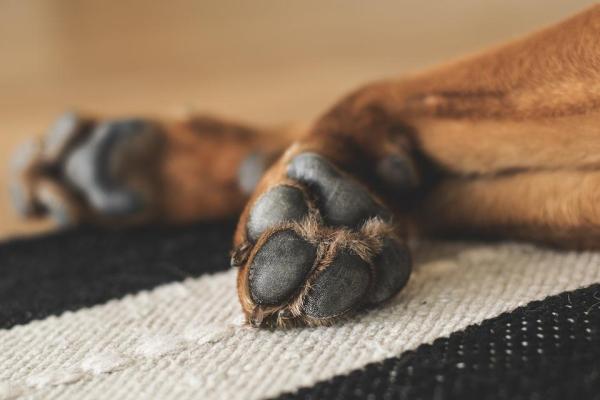
Vasodilation
Vasodilation is another cooling mechanism dogs employ, which involves the widening of blood vessels.
When a dog overheats, the blood vessels near the surface of their ears, face, and occasionally paws expand or dilate. This expansion increases their diameter, enabling a greater volume of blood to flow through them. As a result, warmer blood from the dog's core moves closer to the skin's surface. The expanded surface area facilitates more efficient heat transfer, aiding in cooling the dog down.
As the warm blood travels through these dilated vessels near the skin, it comes into closer contact with the cooler surrounding air. This facilitates heat transfer directly from the blood to the air, further aiding in the cooling process.
It is important to note that dehydration can impair vasodilation, making it harder for dogs to cool down efficiently.
While vasodilation serves as a primary cooling mechanism, it also contributes to various other bodily functions. This dilation facilitates enhanced blood flow to specific body regions, proving beneficial during exercise and the healing process. Moreover, vasodilation can occur during inflammation, enabling the delivery of immune cells and other essential factors to the affected area.
Lastly, contrary to what many think, the dog's tongue itself doesn't directly participate in vasodilation. Vasodilation primarily affects blood vessels near the surface of the ears, face, and sometimes paws. However, the tongue plays a critical role in the overall cooling process that works in conjunction with vasodilation because during panting, blood flow to the tongue increases. The tongue's bumpy surface, called papillae, significantly increases its surface area, which ultimately allows for more moisture to be present and more air to come into contact with the saliva film, maximizing evaporation for cooling.
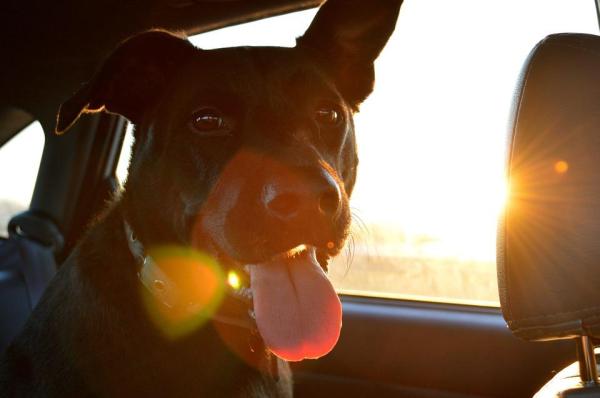
Panting
Unlike humans who rely heavily on sweating, panting is the primary way dogs cool themselves down. During panting, a dog breathes much faster than usual, inhaling and exhaling rapidly. This increased respiratory rate allows for more air to move across the moist surfaces of the tongue and lungs.
A dog's tongue is specially adapted for evaporation. Covered in tiny bumps called papillae, it has a significantly increased surface area compared to a smooth tongue. These papillae also constantly produce saliva, creating a thin film of moisture on the tongue's surface. Evaporation requires energy. When water evaporates from the dog's tongue, it takes heat energy with it, effectively lowering the dog's body temperature.
As air rushes over the moist tongue during panting, the saliva evaporates. This process of evaporation absorbs heat energy from the dog's body, similar to how sweat works for humans. The cooler blood circulating through the tongue then travels throughout the body, helping to regulate their overall temperature. Furthermore, the rapid inhalation and exhalation during panting creates a stronger airflow over the moist surfaces of the tongue and lungs, further promoting evaporation.
It is important to note that some factors might influence the efficiency of this method. For example, high humidity reduces the rate of evaporation, making panting less effective in cooling the dog.
Additionally, puppies, older dogs, or those with respiratory issues may have difficulty panting effectively, making them more vulnerable to overheating.
While panting is primarily a cooling mechanism, it can also serve other purposes. On the one hand, the increased respiratory rate during panting can also help a dog take in more oxygen, especially during exercise. On the other hand, the rapid exhalation helps expel carbon dioxide, a waste product of cellular respiration.
Did you know panting can also be a sign of stress in dogs? For more on recognizing doggy distress, check out our article on the most common stress signs in dogs.
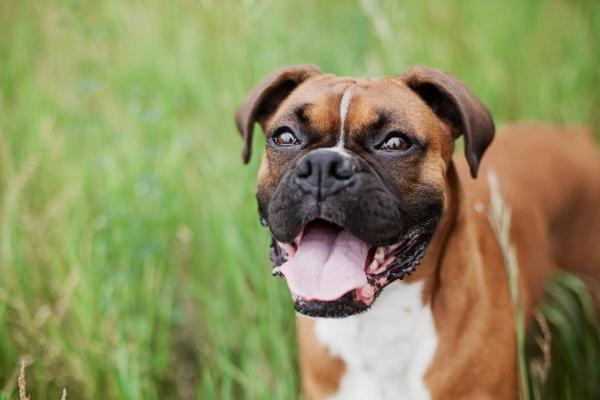
Exceptions
While sweating plays a minor role in cooling most dogs, hairless breeds have an advantage. They possess sweat glands not only in their paw pads, but also distributed throughout their bodies, including the skin, face, and ears. This wider distribution allows them to sweat more effectively for temperature regulation. Some popular hairless breeds that follow this pattern are:
- Chinese crested
- Peruvian Inca orchid
- American hairless Terrier
- Thai ridgeback
- African hairless dog
- Xolo or Aztec gog
It's important to note that sweating remains a secondary cooling mechanism for all dogs, even hairless breeds. Panting is still their primary method for regulating body temperature. However, the wider distribution of sweat glands in hairless breeds allows them to sweat more compared to other dogs.
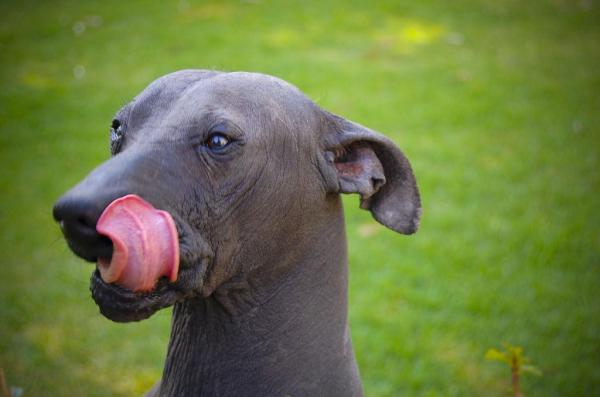
If you want to read similar articles to How Do Dogs Keep Cool?, we recommend you visit our Facts about the animal kingdom category.

